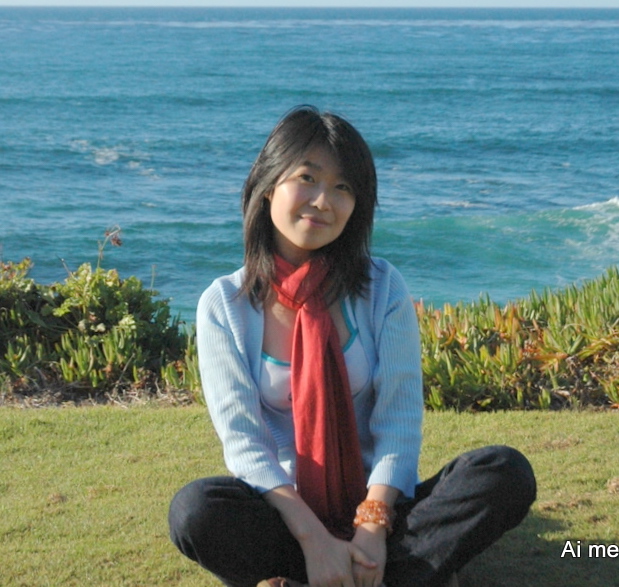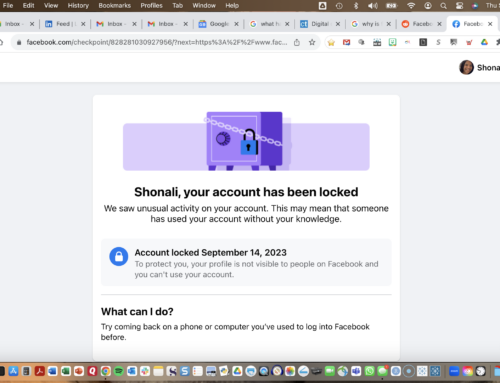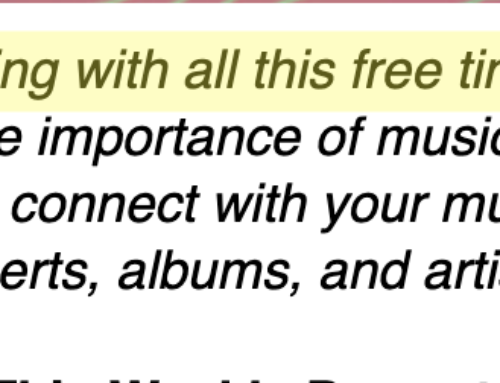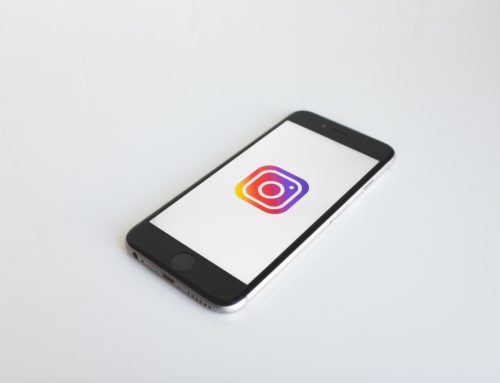![]() Guest post by Ai Addyson-Zhang
Guest post by Ai Addyson-Zhang
I am a late adopter of the social media game. In fact, I didn’t start my social media journey until March 2015.
At the time, I had no personal brand, let alone a community. I had about 300 followers on Twitter, no presence on Instagram or Pinterest, and only sporadically shared random content on Facebook.
Fast forward to today, I have grown my follower base on various platforms substantially and organically. For example, on Twitter, I have grown from 300 to 6,650 followers, and from zero to 914 on Instagram.
But numbers can be fake and easily manipulated; they aren’t what really matter.
Hence what made me most proud is a community that I have developed and nurtured over time. It is a community of people who consume and trust my brand and content, and who offer unfailing support.
For example, I have a group of people who regularly join my weekly Facebook live show, Classroom Without Walls – Using Technology to Reimagine Education (Wednesday at 5 p.m., EST), to engage in meaningful discussions and conversations with guests on various topics related to social media, technology, and education.
My recent live interviews with Shonali Burke and Brian Fanzo generated a huge amount of organic audience engagement. For example, my interview with Brian Fanzo gained 1.4K plus views, 13 shares, and 210 plus comments. I attribute this high level of engagement to the community that I have cultivated over time.
I cannot imagine being a content creator without having a supportive community.
In this article, I want to share with you my top community building strategies and tips so that you can apply them to grow your own community.
1. Participating in Twitter Chats
My social media journey started by participating in various social media-related Twitter chats. For three months in a row, I joined at least two or three Twitter chats a day. I was hungry for knowledge and eager to make professional connections.
My efforts paid off. When I started to encounter the same group of people regularly on various chats, I developed relationships with them and familiarized myself with their expertise and content.
These relationships proved to be extremely valuable for what I do as an educator and consultant. For example, I teach public relations and social media courses. I always try my best to bring in as many guest speakers as possible from the industry to share the latest practices with my students.
I used to struggle with finding quality guest speakers; there were only three or four people that I rotated every single semester. Once I became more active and visible online, I started to develop a waiting list of speakers from the industry who wanted to talk to my students. The difference was like day and night.
Students love learning from professionals; and professionals enjoy passing their expertise on to the next generation. It’s truly a win-win situation.
2. Cultivating One-On-One Relationships
With the proliferation of digital communication devices and platforms, we have all drastically expanded our network. For example, the average American knows 600 people, according to a study conducted in 2013. Social media can make it feel like we have an even larger circle than that, based on the number of followers or friends we have on various platforms.
However, how many people do we actually know? How many of them can we actually call friends? How many of them do we engage in meaningful interactions or collaborations?
Probably not nearly that many.
I pride myself on making one-on-one connections with people. This past January, I scheduled at least five or six virtual hangouts with people I connected with online. Each conversation ranged from 15 minutes to sometimes hour-long discussions on subjects we were passionate about. Many of these one-on-one virtual hangouts have developed into long-term collaborations and valued friendships.
I credit my developing community to these one-on-one connections that I have made over time. Is it time-consuming to make such efforts? Yes, if you think that way. However, to me, the essence of being on these social networking sites, as the name itself suggests, is to be social and to engage in authentic human interactions. That’s how we build communities.
Especially in today’s digital space, people are bombarded with constant content, information, sales as well as sponsored or automated promotions. We are hungrier than ever for genuine and meaningful human interactions, virtually or in-person.
I hope you can make 2018 the year of engaging in genuine human interactions and to truly get to know the people in your networks.
3. Select, Focus and Respect the Audience & Culture on Each Social Site
Do you suffer from Fear of Missing Out (FOMO)? Do you feel an urge to be on every single social platform that comes out? Do you feel pressured or stressed by all the gurus who tell you that you need to have an active presence on every single social networking site? I used to feel this way, big time.
Social media doesn’t sleep but instead operates on a 24/7 cycle. However, humans are not robots, unless you have a team to help you manage your online presence. If you are a small business owner or an individual trying to build your digital footprint, I highly recommend that you select one or two platforms where your audience congregates and focus on them.
Every social networking site has its unique culture and demographics. As content creators, we need to respect the context of each site and the audience there. How we communicate on Twitter differs substantially from how we communicate on Snapchat or Instagram, for example. You want to create content unique to each platform while thinking about the needs of your audience
It is a lot easier to focus and make an effort to know your audience on a few platforms than try to spread yourself too thin to be omnipresent. When you are trying to be everywhere, you end up being nowhere; and when you are trying to speak to everyone, you end up speaking to no one. This is the biggest lesson I learned during the early stages of my social media journey.
I spent almost a year chasing after every shiny object which came out. I was so exhausted that I had little time or energy left to create original content. I lost sight of why I was even on social media in the first place. Ironically, my very fear of missing out indeed made me miss out on many opportunities to serve my audience and build a community.
Learn from my mistake: Select and focus, and respect the people and culture on each platform.
4. Serve Before You Take; Give Before You Ask
In Chinese language, the word “receiving” is actually composed of two individual words. One is giving and the other is receiving, and giving is placed before receiving. To me, this phrase perfectly summarizes the gist of community building.
In today’s digital space, there is no shortage of self-promotion or salesmanship. However, to build a community, you have to serve and give first. You need to make an effort to understand your audience. What do they want? What are their pain points? Then deliver content, products or services that can make your audiences’ lives better.
When you build enough trust, they will naturally become loyal members in your tribe and feel motivated enough to tell your stories and advocate for you. That’s how you grow a community.
Social media platforms come and go, but people will stay once you have developed trust and community.
5. Be Consistent
My last piece of advice is to be consistent. Community building takes time. Engaging in genuine conversations and interactions with people involves time and effort. Just like there is no overnight success, you cannot build a loyal community in a day.
Being consistent is the secret ingredient that glues the aforementioned four tips together. You have to be consistent at joining Twitter chats, otherwise people are not going to remember you; you have to be consistent in cultivating one-on-one relationships, otherwise your community will stop growing and you will become a stranger to your audience; you have to be consistent at focusing on the platforms that you have selected and producing quality content, otherwise you will struggle to rise above the digital noise; and finally be consistent with your effort to serve and give before you take and ask for anything in return.
When you follow these tips, slowly but surely, you will develop a growing community who trusts and supports your content, products, and services.
How about you? What are your top strategies or tips to cultivate a community?
Image: rawpixel.com via Unsplash, Creative Commons CC0
 Ai Addyson-Zhang is a professor, blogger, liver-streamer, and digital learning consultant. She received her M.A. from Syracuse University and Ph.D. from the University of Maryland, both of which are located in the United States. Ai teaches Public Relations and Social Media classes at Stockton University in the US as an Associate Professor. Outside the classroom, Ai serves as a Digital Learning consultant. She conducts research and offers independent consulting services in this area. Ai is also the host of the weekly Facebook live show, Classroom Without Walls: Using Technology to Reimagine Education. Ai’s live show is watched by people from thirteen different countries. Her recent interview with Mark Schaefer gained 1.2K+ views, 21 shares, and 230+ comments.
Ai Addyson-Zhang is a professor, blogger, liver-streamer, and digital learning consultant. She received her M.A. from Syracuse University and Ph.D. from the University of Maryland, both of which are located in the United States. Ai teaches Public Relations and Social Media classes at Stockton University in the US as an Associate Professor. Outside the classroom, Ai serves as a Digital Learning consultant. She conducts research and offers independent consulting services in this area. Ai is also the host of the weekly Facebook live show, Classroom Without Walls: Using Technology to Reimagine Education. Ai’s live show is watched by people from thirteen different countries. Her recent interview with Mark Schaefer gained 1.2K+ views, 21 shares, and 230+ comments.









[…] will eliminate all work positions in the next 20 years. With the help of technology you can build an online community to help build your business or network with people in the industry. You can beat the competition of […]
Ai, I love this post so so so SO much!!! You are literally the embodiment of everything you wrote about.
Just think of how we connected… I think first online, then at a PRSA conference, then we talked more online/FB etc, then we Skyped while you were in S. Korea, then you invited me on your show (or maybe both of those were simultaneous), then I invited you to blog here, then we talked some more… it’s remarkable!
Especially given how easy it is to make fleeting connections on social media, #2 is really important for me. This is why I really try to talk to people as much as I can via video calls; in fact that’s my default now, v a phone call. When technology allows us to make that visual connection, why not take advantage of it?
And I think the fact that you do a Facebook Live show every week is a HUGE impetus in you building your community as well.
I hope you have a wonderful time in San Diego, my friend. So glad to know you!